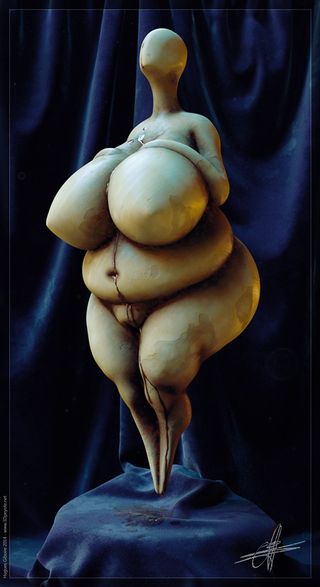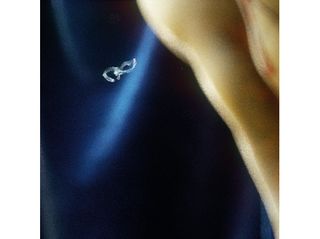3D modelling tips: creating a blur effect
Digital artist Hugues Giboire explains the process of modelling a bokeh effect.

In one of my recent personal works (above), I wanted to use the negative space of the blue velvet background of the scene
to create an effect reminiscent of the stars against the night sky.
In general, I tend not to leave anything to the post-processing stage. I take pride in making sure that everything I want the viewer to see is physically present in the scene. This is one luxury that using an unbiased renderer offers: if I don't want to fake it, then I don't have to. I can simply model it. In this specific case, I decided to fill the volume of the scene with dust.

Starting from a cylinder that I then deformed and sculpted, I created a dust speck with convoluted shapes offering more surface area for the light to hit. It is modelled to scale, which is less than a millimetre in diameter.
The material created for the speck has soap-bubble characteristics: firstly it is very specular to reflect as much light as possible; and secondly it is finished with a thin film in order to create mild colour variations, dependent on the viewing angle of the surface.
In Maya, I used a simple emitter and filled the scene with particles that were then used as input co-ordinates to generate the thousands of instances it takes to create a convincing effect in the final render. Once out of focus, the specks that catch the light will bloom into a fairly convincing bokeh effect.
Words: Hugues Giboire
A 3D artist with more than 20 years' experience in the CG industry,
Hugues Giboire is a BAFTA nominee for artistic achievement in video games. This article originally appeared in 3D World issue 180.

Thank you for reading 5 articles this month* Join now for unlimited access
Enjoy your first month for just £1 / $1 / €1
*Read 5 free articles per month without a subscription

Join now for unlimited access
Try first month for just £1 / $1 / €1
Get the Creative Bloq Newsletter
Daily design news, reviews, how-tos and more, as picked by the editors.
The Creative Bloq team is made up of a group of design fans, and has changed and evolved since Creative Bloq began back in 2012. The current website team consists of eight full-time members of staff: Editor Georgia Coggan, Deputy Editor Rosie Hilder, Ecommerce Editor Beren Neale, Senior News Editor Daniel Piper, Editor, Digital Art and 3D Ian Dean, Tech Reviews Editor Erlingur Einarsson, Ecommerce Writer Beth Nicholls and Staff Writer Natalie Fear, as well as a roster of freelancers from around the world. The ImagineFX magazine team also pitch in, ensuring that content from leading digital art publication ImagineFX is represented on Creative Bloq.
